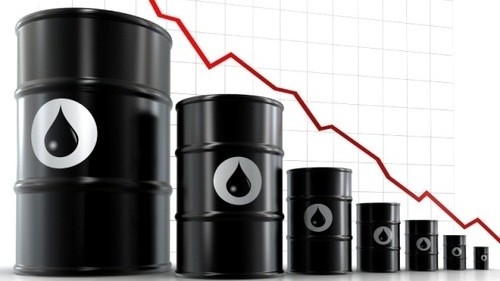The decline of crude oil prices on the world market could continue throughout 2016, even going down to as low as US$20 a barrel.
The underlying cause for this is the serious imbalance between supply and demand as key oil-exporting countries are in a ‘race’ to maintain production, despite lower selling prices, to maintain market share amidst low demand for crude oil due to a slowdown in economic growth, especially in emerging economies, coupled with weather factors and advances in renewable energy use.
In addition, a number of geopolitical factors, plus exchange rate policies of some strong currencies, also contribute to the trend of falling oil prices.
Price volatility affects all economies around the globe, especially those depending heavily on crude oil exports and the use of crude oil products, including Vietnam.
Crude oil prices falling sharper than forecast also affects economic growth as production and export of crude oil still play an important role in the country's economy.
Oil revenues still account for 10.2% of total State budget revenue according to 2015 estimates, even as average crude oil prices hit less than half of the estimated price of US$100 a barrel. Budget collection has been significantly affected, especially as there is shortage in revenue collection to offset the deficit worth tens of thousands of billions dong.
It is important to note that falling crude oil prices, resulting in a decrease in gasoline prices, has a positive impact on Vietnam’s economic recovery with GDP growth above the yearly target, and is one of the main reasons for the only 1% CPI increase in 2015.
Responding to crude oil price volatility to maximise benefits and minimise negative impacts from its price decline requires appropriate solutions from concerned authorities in 2016.
First, the Ministry of Finance (MoF) should map out different plans on revenue deficit corresponding with each prediction of crude oil and gasoline prices in 2016, including average prices as well as monthly and quarterly prices.
Second, the ministry needs to co-ordinate with relevant agencies to comprehensively analyse the impact of each alternative crude oil price (plus the price of petroleum products) for domestic production and business, imports and exports, and domestic consumption in order to develop specific plans for State budget revenues based on forecast total revenues and revenue restructuring.
Third, based on the possible forecast scale and tempo of revenue deficit, the MoF should actively propose solutions to offset shortfalls for temporary and non-temporary revenues from other operators, even intensifying State budget loss prevention and adjusting budget expenditure.
Fourth, the MoF and Ministry of Industry and Trade should strengthen co-ordination with relevant authorities to calculate the potential of reducing exploitation and export of crude oil, especially in places with higher extraction costs in comparison with export prices to avoid selling the country’s nonrenewable valuable resource at cheaper prices.
















